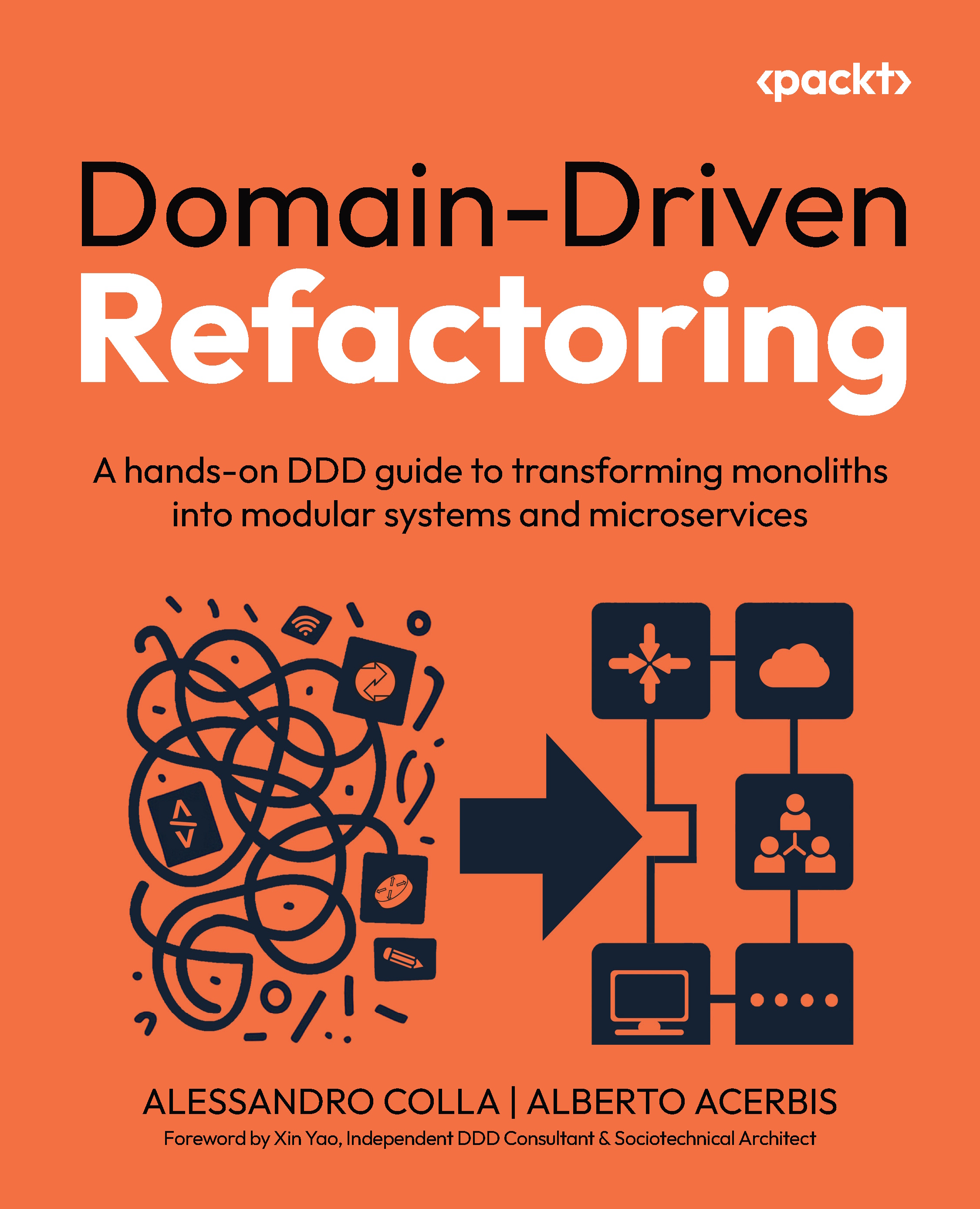Dividing the domain into meaningful boundaries
The most obvious advantage of having a ubiquitous language is the ability to easily identify the boundaries around a business problem and split the domain into many subdomains. A business domain is the main area of activity of a company. In the example we will use in this book, the business domain is brewery management. The service that our hypothetical company provides is the production and selling of the best beer in the world! Easy.
It is important to understand that the business domain is not a software application. The software provides the solution you create to help your customer manage their business. A business domain is generally big and complex. So, as you have already discovered, having just one model to describe the whole business is impossible, and it is probably the situation that you will find yourself in when approaching refactoring. You can see the problem of having a “one-size-fits-all” model. It is...
































































